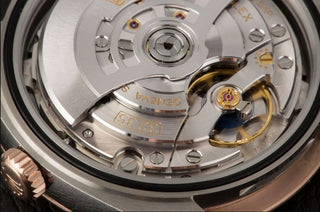You might assume that after spending a substantial amount of money on a luxury watch, the major expenses are over once you leave the store or complete the online purchase. However, over time, the costs associated with servicing a complex or even a relatively basic mechanical watch accumulate and can eventually surpass the original retail price.
On the positive side, this indicates that your investment has been worthwhile, as the watch has served you faithfully for many years and likely brought you much joy during that time. Nevertheless, luxury watch owners can't help but feel somewhat annoyed when they have to spend significant amounts of money just to maintain something that seemed to be working fine initially.
Regarding the idea that certain watches, like the Rolex Submariner, are often considered "bulletproof" and praised for their durability, it is essential to remember that all mechanical objects, regardless of their robust construction, require regular maintenance. Most luxury watch companies recommend servicing your watch every 3-5 years to ensure it operates optimally and to prevent serious wear and tear. Some manufacturers now produce watches with service intervals of up to ten years, but it raises the question of what exactly this interval entails and whether it is always necessary to strictly adhere to the watchmaker's advice.
Unveiling the Necessity of Servicing Luxury Watches
The extent of "service" varies significantly depending on the watch company you are dealing with. It can be influenced by whether your watch is powered by a third-party movement or an in-house creation, as well as the brand's stability. Additionally, it is worth considering how long each brand guarantees to provide repair services for their watches after the point of purchase, which can vary among companies.
Generally, most major brands assure customers that they will have the necessary parts to rebuild their watches from scratch for up to 30 years after the purchase. While this may seem like a reasonable duration, it might not be ideal if you plan on passing down the watch as an heirloom to your descendants. Now, let's delve into the terms "optimal operation" and "serious wear and tear." It should come as no surprise to luxury watch enthusiasts that these timepieces are intricately crafted machines. They consist of hundreds of components interacting multiple times per second to display the time accurately.
This intricate nature means there are thousands of opportunities every hour for something to go wrong. To maintain the smooth functioning of these numerous components, specially-formulated lubricants are applied to surfaces that bear heavy loads. However, over time, these lubricants can dry out, especially if dirt or debris from damaged components comes into contact with them. When foreign particles enter the lubricant, they can cause even more damage to the very components that the lubricant was intended to protect.
Reasons Luxury Watches Need Service
Let's consider a hypothetical scenario where a small piece of brass breaks off from a wheel tooth due to a severe shock to the watch. This occurrence is not uncommon and may not immediately impact the watch's timekeeping abilities. The tiny brass chip could remain inside the mechanism for a considerable period, causing minimal damage and having little effect on the watch's operation.
However, if the brass chip finds its way into the lubricant, it is likely to become stuck there. Once stuck, it can lead to significant damage by frequently coming into contact with finely crafted components like wheel pinions. Even though wheel pinions are typically made of steel, which is much harder than brass, the presence of a foreign object near the heavy bearing point of a pinion can gradually score the metal, roughening its surface. This, in turn, increases friction and drag between the pinion and the jewel-bearing in which it sits, ultimately affecting the watch's ability to maintain accurate timekeeping.
Proactive Maintenance vs. Necessary Repairs
Indeed, regular servicing is crucial as it helps address small issues like lubrication problems or minor damage caused by everyday wear and nominal shocks. Just because a watch appears to be functioning correctly on the surface doesn't guarantee that there are no underlying problems developing. Issues such as damage to a wheel pinion, even to the point of complete obliteration, are relatively minor compared to the potential damage that could occur to more significant components, particularly the mainplate.
This concept of "serious wear and tear" refers to the stage where significant portions of the watch movement require replacement, something all watch owners wish to avoid. This not only entails substantial expenses but can also be time-consuming and negatively impact the watch's value and provenance. While changing a minor component like a random third wheel may be manageable, replacing a serialized baseplate is an entirely different matter. Such catastrophic failures usually take time to manifest, but staying on top of regular maintenance is essential to prevent major issues like the one described from occurring. By doing so, watch owners can safeguard their timepieces, maintain their value, and prevent costly repairs in the future.
Servicing Third-Party vs. In-House Movements
When considering a luxury watch brand, strategic thinking is essential. Newer brands often use simple and widely available movements, making them easier to service. Watches with esteemed heritage, like Patek Philippe, have a strong track record of reliable repairs. However, newer high-tech brands might face challenges in guaranteeing long-term part sourcing. If you prefer such brands, be diligent with maintenance and rely on their customer service for quality work to keep your watch running well over the years.
